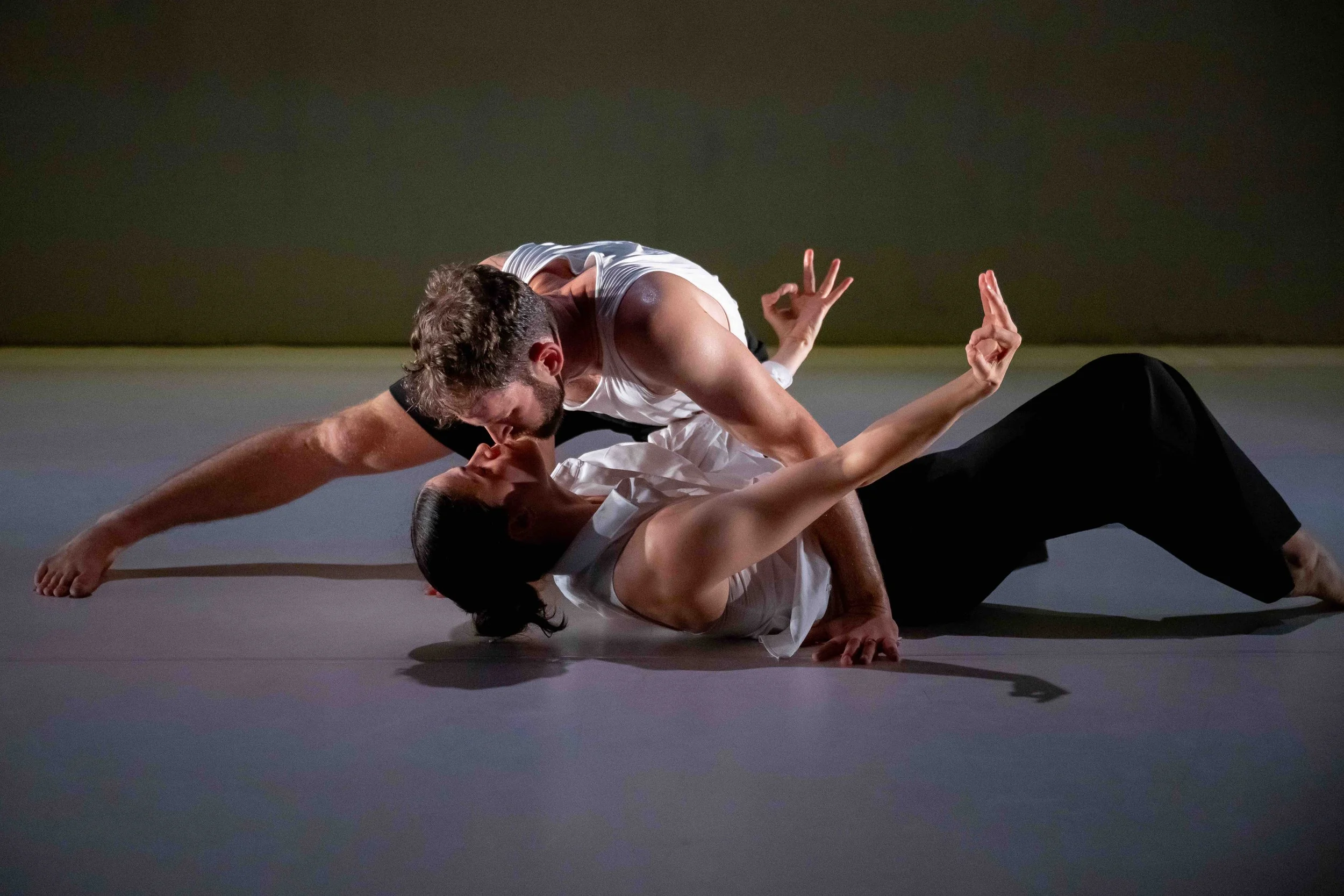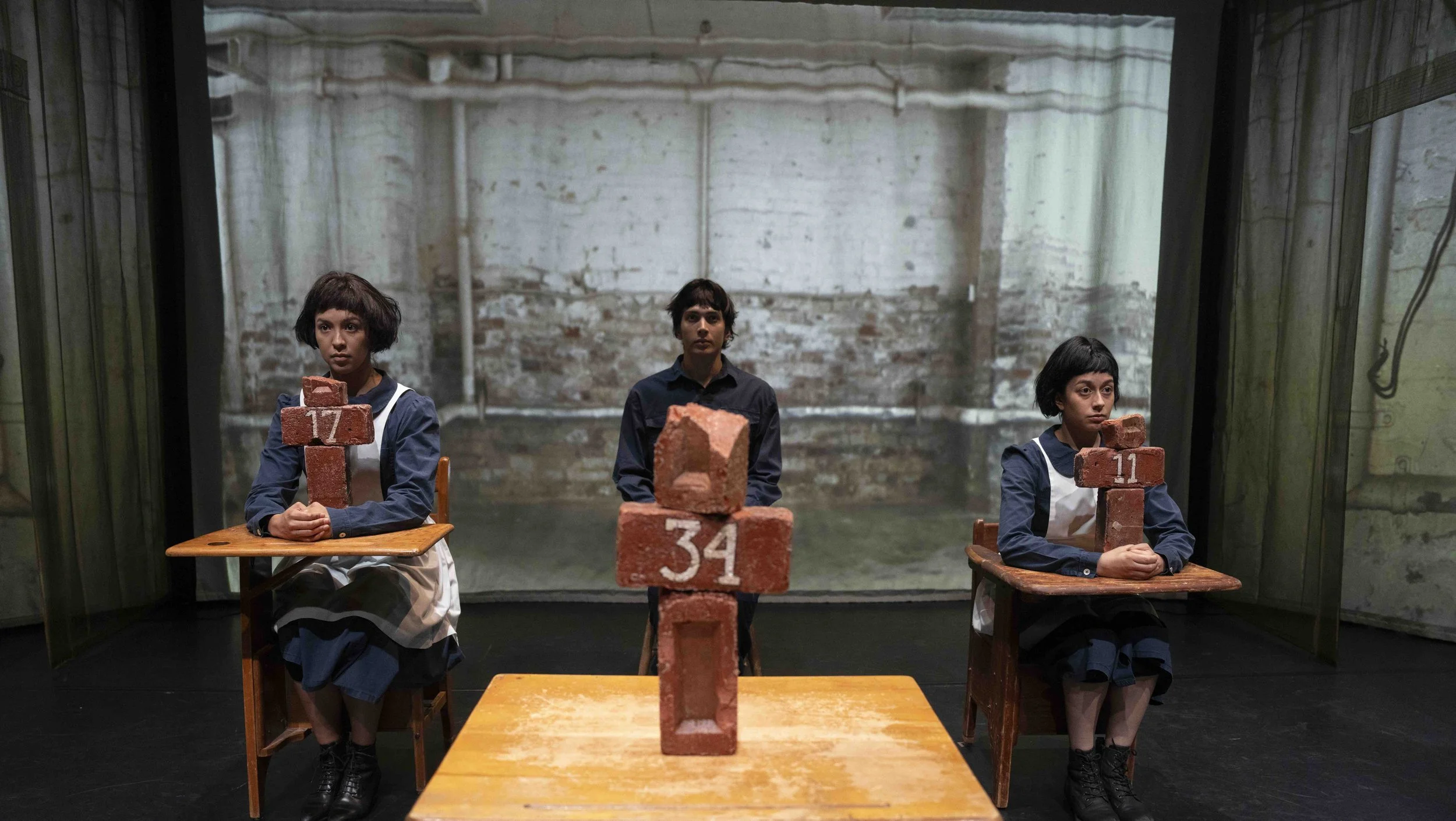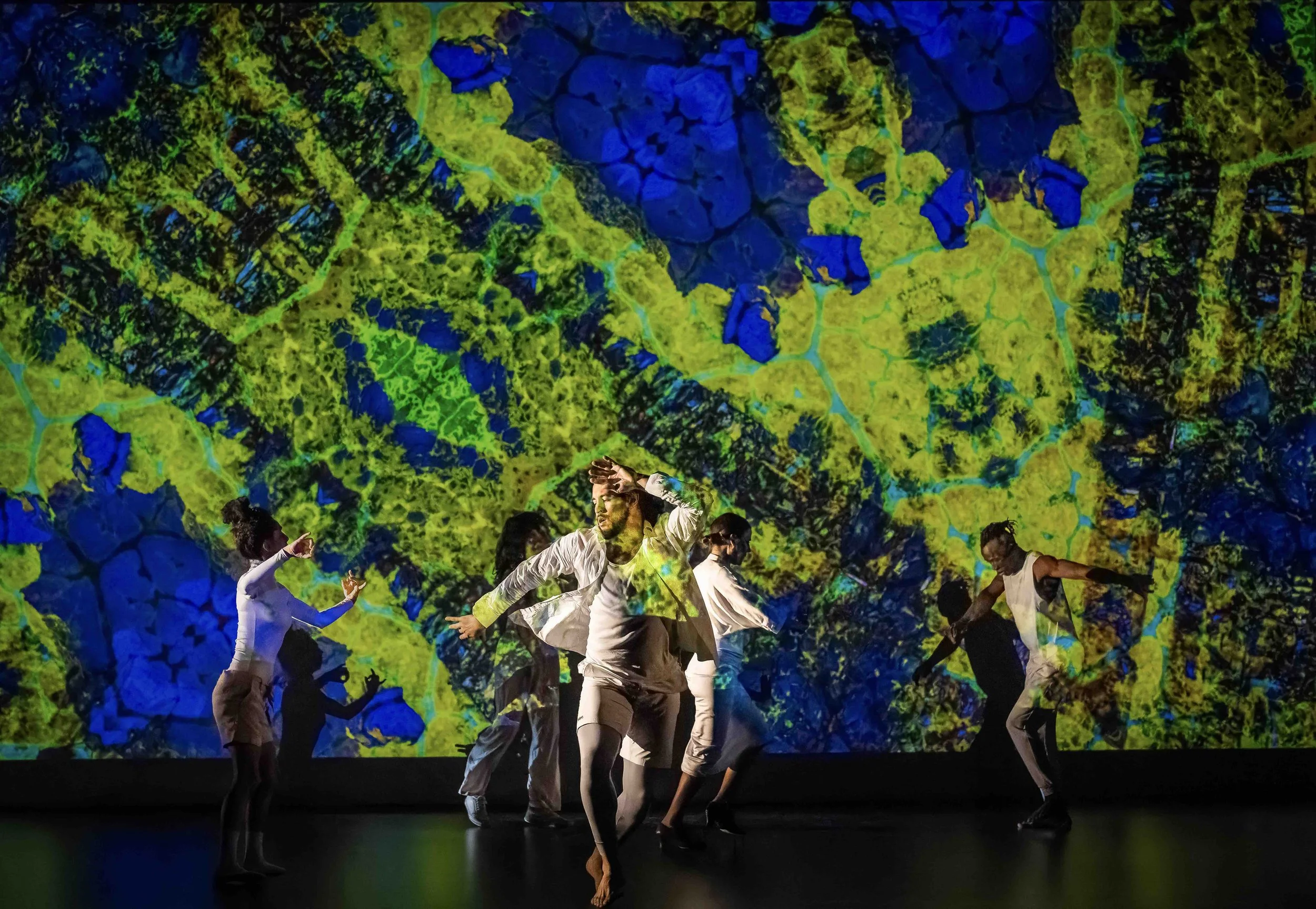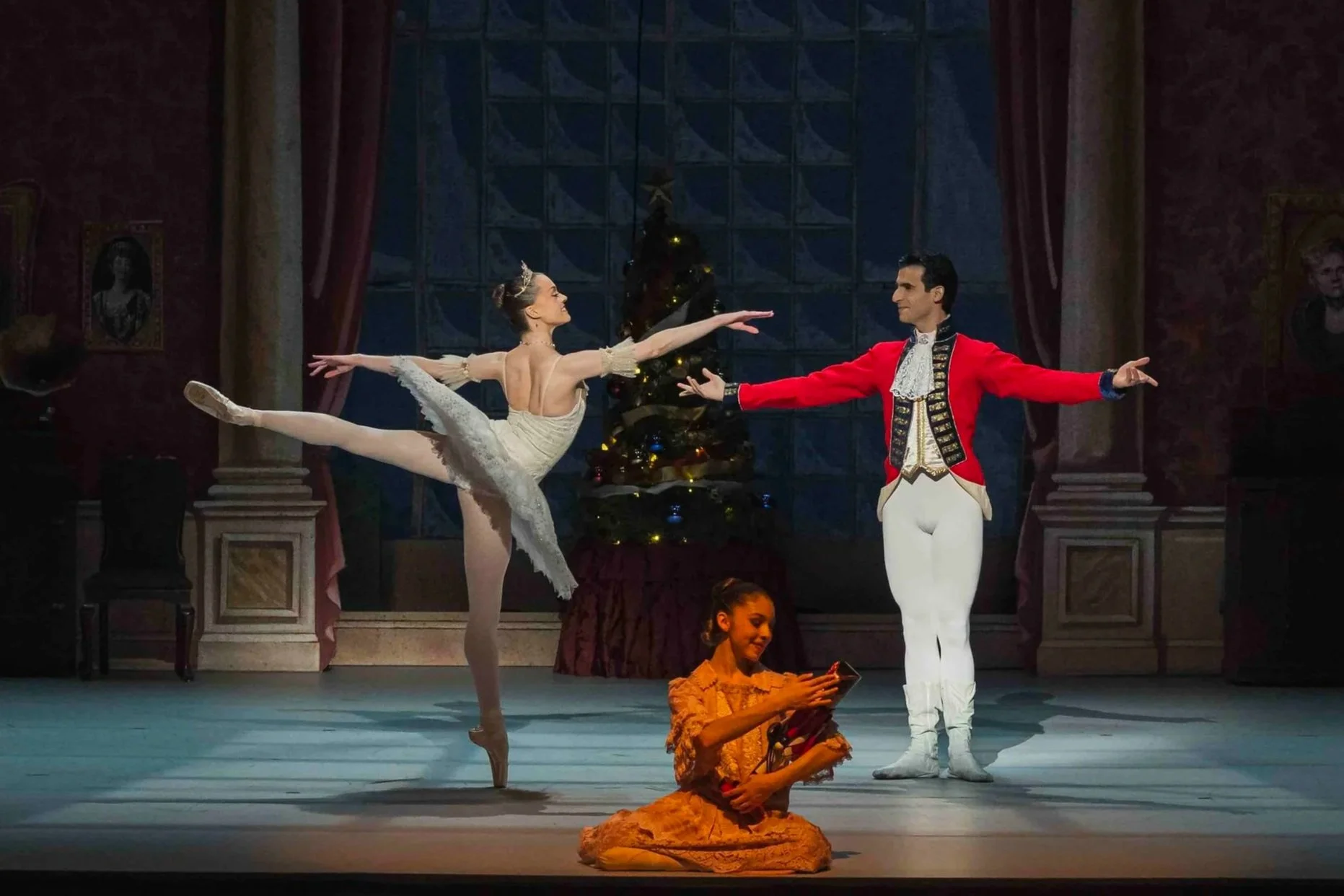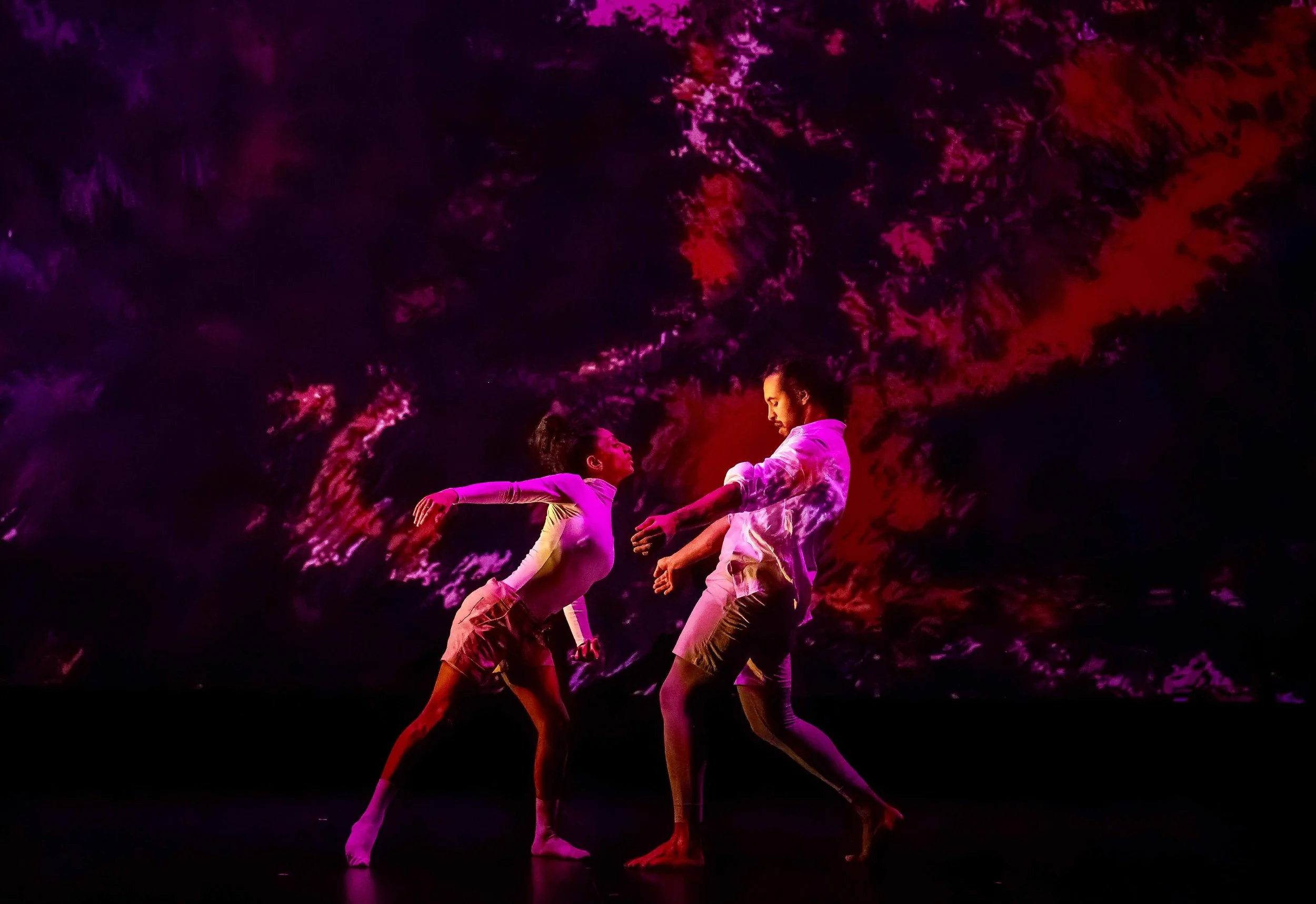Stir Q&A: olive theory's Stefan Nazarevich and Shion Skye Carter talk piano wires, DIY, and hardware synthesizersd
The Vancouver multidisciplinary duo draws from their expertise in music and dance
Olive theory’s Stefan Nazarevich and Shion Skye Carter.
WHO DO YOU go to if you want to see two performers working with a do-it-yourself approach, matching buzzcuts, and multiple piano wires that run from ceiling to floor?
The answer is easy: to Stefan Nazarevich and Shion Skye Carter.
Drawing from their expertise in music and dance respectively, Nazarevich and Carter formed the Vancouver-based interdisciplinary duo called olive theory.
The duo’s work involves blurring and distorting the idea of what musical instruments look like and how they should be played, often featuring novel, intimate interaction with large, custom-built instruments. In the case of their 2019 work reach-close, that’s meant a sculptural, amplified piano-wire installation, with the performers plucking and grating the strings with violin bows, or scraping against them with their shaved heads. Olive theory blurs and distorts the line of what an instrument should look like, and how it should be played.
Their most recent rendition, reach-close (2 home), premiered virtually in early February. Now, Nazarevich and Carter are focused on showing how useful a DIY mentality is for art creation during this unpredictable time.
Olive theory plays with the boundaries between dance, music, technology, and architecture, investigating what it means to be equal performers within each discipline. Their work plays with the relationship between what is heard and what is seen.
But, as it has done for many other artists, COVID-19 has forced Nazarevich and Carter to rethink their creation process. They quickly realized that without the use of studio space, equipment, or performance opportunities, the homemade nature of olive theory’s projects could inspire their peers to keep searching for new creation avenues through the pandemic. Currently, the pair is working to cultivate community and youth-based projects to support Vancouver’s art scene.
Stir had the chance to talk with Nazarevich and Carter about the origins of olive theory, their plans to support Vancouver’s arts scene, and how they see COVID-19 touching their industry.
Did you always see yourself being a musician and dancer, respectively?
NAZAREVICH: “I wanted to be an astrophysicist until I realized that involves math, and I’m not good at it, at all. By the time I was at the end of high school, I really disliked school, but I was accepted into this cognitive science program at UBC. I was kind of excited about it, but I couldn’t give up music—I was obsessed with it!—which sent me to SFU’s music program.”
CARTER: “I wanted to be a nutritionist at first. My parents are super sports-oriented, so there’s something about physicality and the body that I’ve always connected with. Once I realized there was a post-secondary dance program at SFU, I didn’t even apply for anything else. I always thought art could only be a hobby, and it was super eye-opening to see that I could make a career for myself, even if I didn’t train from a really young age or audition for a company.”
How do you think your different backgrounds and interests make olive theory successful?
NAZAREVICH: “It’s interesting because I have this cerebral approach from my interest in philosophy. But, Shion has a more physical approach with her kinesiology, nutrition, and dance. We’re polar opposites in that sense! It works because we’re different and complement each other, I think.”
CARTER: “Yeah! That contrast is such a big part of our duo, because the things Stefan offers in our rehearsals come from your cerebral way of thinking. And then, I guide him through how to embody a certain gesture or how to complete a task. It’s almost like Stefan is planning and programming, and I’m executing when we work together. “
Olive theory is really built on this idea of “equal playing fields”, where no collaborator is valued over another. Where did this idea come from?
CARTER: “We really wanted to focus on creating a level playing field, where we both performed rather than lending our skills to the work in a foreground-background way. We found that, in university, it was quite common that you’d see the latter. We’re both super interested in architecture and space, so we started to bring those elements in, too.”
NAZAREVICH: “When you’re a couple, and one is a dancer and one is a musician, the natural thing is that one will dance and one will make music. But, that’s not olive theory. That’s when we came to be— when we realized we didn’t want to make things the foreground and background way. That was when it became olive theory, and stopped being ‘Shion and Stefan’”.
What challenges do you face working so closely with something as unpredictable as technology?
CARTER: “From rehearsal to rehearsal, the technology changes. Sometimes when we take it down and put it back up, it sounds nothing like it did the day before. It’s so frustrating! Always having to adjust and recreate is difficult, because there are so many tweaks and changes everyday. But, we give it agency to do its thing, and we work with it instead of trying to control it.”
NAZAREVICH: “I like to think of putting up and taking down our piano wire installation as building an ecosystem, where all of the parts are interacting with each other, but day to day, the ecosystem doesn’t look the same. In the same sense, our installation and our technology doesn’t look or sound the same each time we work on it. That kind of acceptance took away a lot of the anxiety.”
Olive theory performs within a piano-wire installation.
What is your creation process like?
NAZAREVICH: “A lot of the design elements come first. You can’t make a piece that’s about piano wire without having the piano wire! We normally start with a prototype, flesh things out as we start to improvise with it, and once we reach a limitation, we build a bigger and better prototype.
“It started out as a joke in one of our residencies because Shion was tired of me plucking the strings like an instrument. She was like, ‘Can you please play this with anything other than your hand or the violin bows?’ And I said ‘Fine!’, and ended up scraping it with my head stubble. It made such an interesting sound that was unique to the texture of our hair, and it just skyrocketed from there.”
CARTER: “Yes! We always try to think about the sound of the movement, and the movement of the sound. The arc of our work is based on the sound composition, and how we want it to evolve, and then the movements are involved in that development.”
How has that process been impacted by COVID-19?
NAZAREVICH: “For me, as an electronic musician, I’ve always done a lot of my work at home on my computer. But, just before COVID, I started buying hardware synthesizers. That changed my process because suddenly, I realized I wasn’t a portable artist anymore with all my gear. COVID really gave me time to sit with my ideas, my gear, and really learn.”
CARTER: “Our duo was a bit different because olive theory kind of relies on having particular things in our rehearsal spaces, like lighting grids to hang the wire from, and speakers. Even though we’re DIY, we still needed that space to do our DIYs. It took us a long time to figure out how to make it work at home, but we got here!”
Tell us about your post-pandemic plans.
NAZAREVICH: A big goal of ours is to build our community. We’re really working on building up the Vancouver contemporary arts scene, both through COVID, but also after. It’s hard and sad to watch talented artists move away because they see better art scenes somewhere else. I’m like, ‘But I want you to stay here!’ So, we’re really looking to build a space for artists, for our group, our scene, and our community to grow and thrive so they don’t have to move away to find something bigger.”
Do you have any upcoming projects we should keep our eye out for?
CARTER: “Yeah! We want to keep developing reach-close into other iterations and forms, and just continue playing with the ideas of that one. An installation in a public space on a bigger scale would be amazing, especially if it can include the public. Maybe in an alley between two buildings? We’re also looking into making some youth initiatives, and get them involved in making art.”
NAZAREVICH: "A big aspect of our duo is our skill as craftspeople and our DIY skills. We want to continue making and inventing new things to add into our work, or maybe even become adept enough that we can teach workshops or something along those lines. I think that this concept of artisanship is becoming a lot more important in COVID times, so we want to keep becoming skilled in different areas of art and sharing so we can learn from others while they learn from us."






